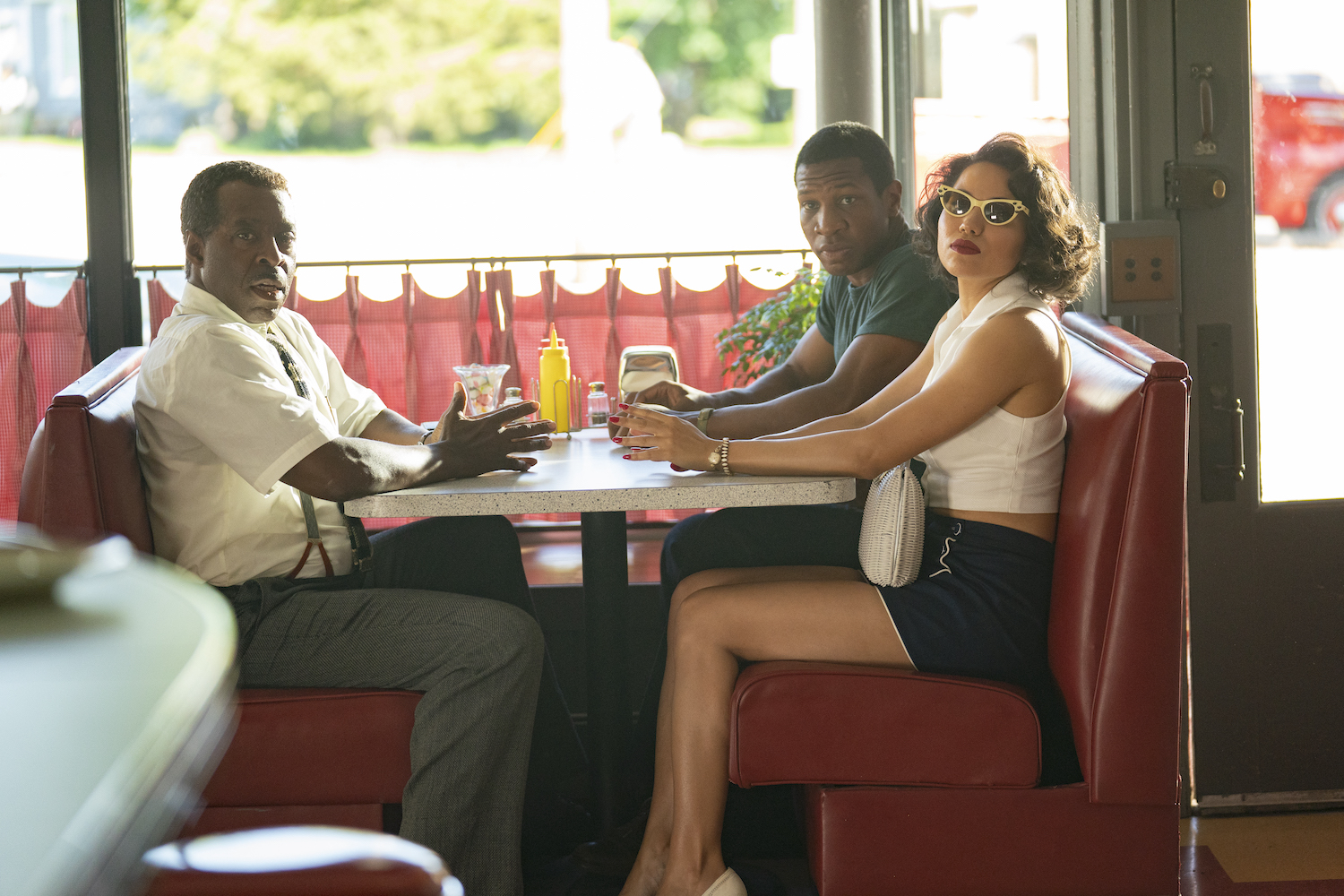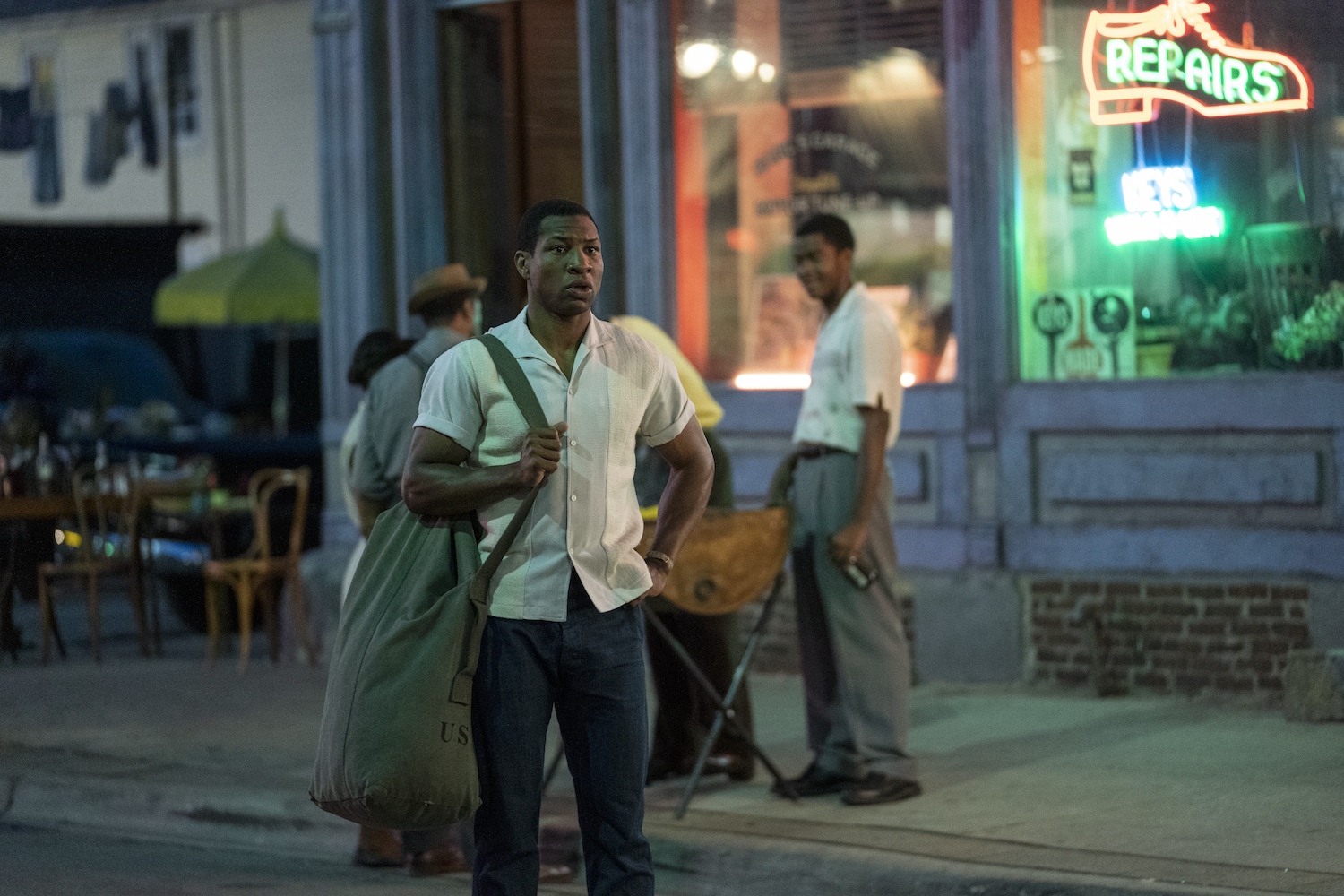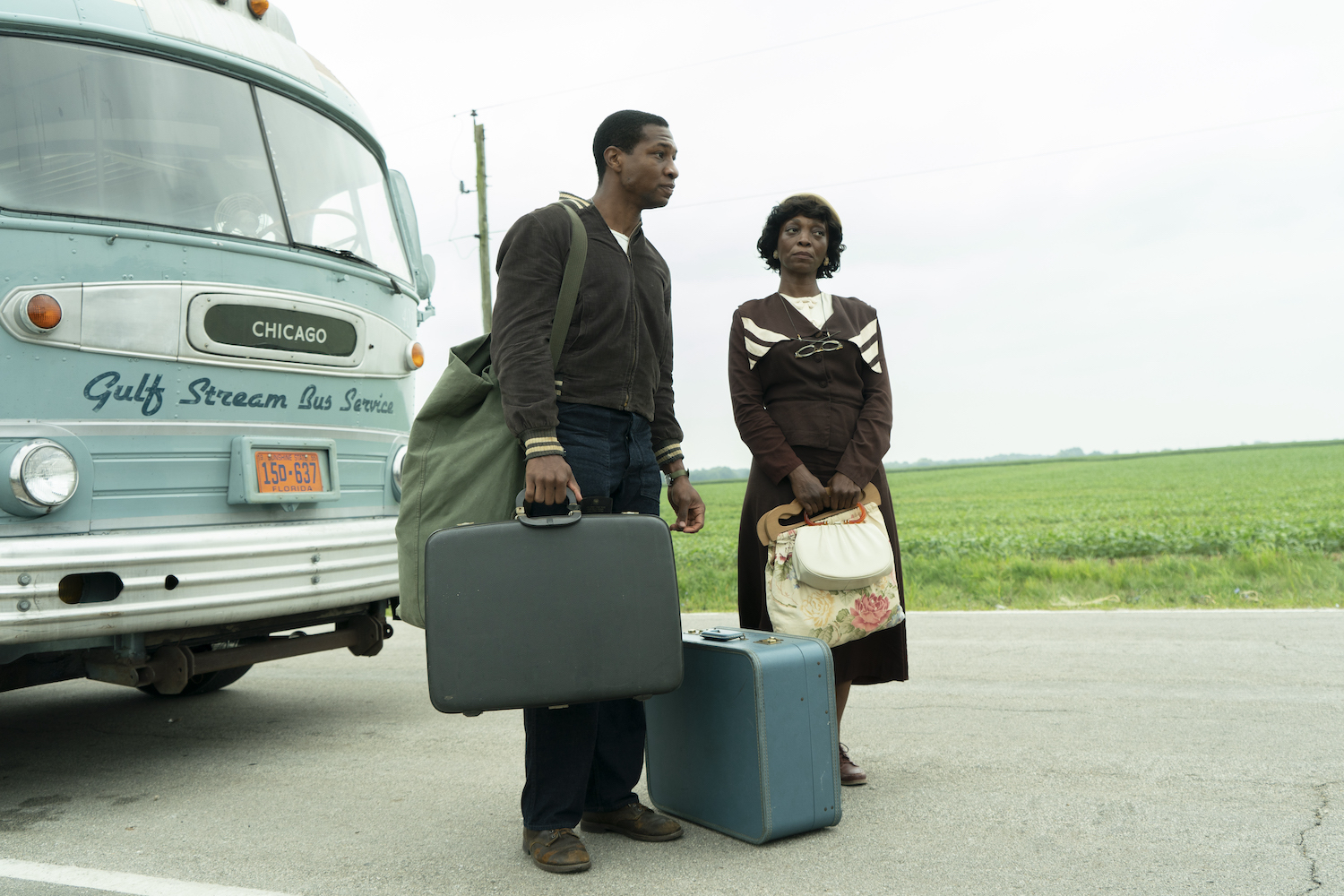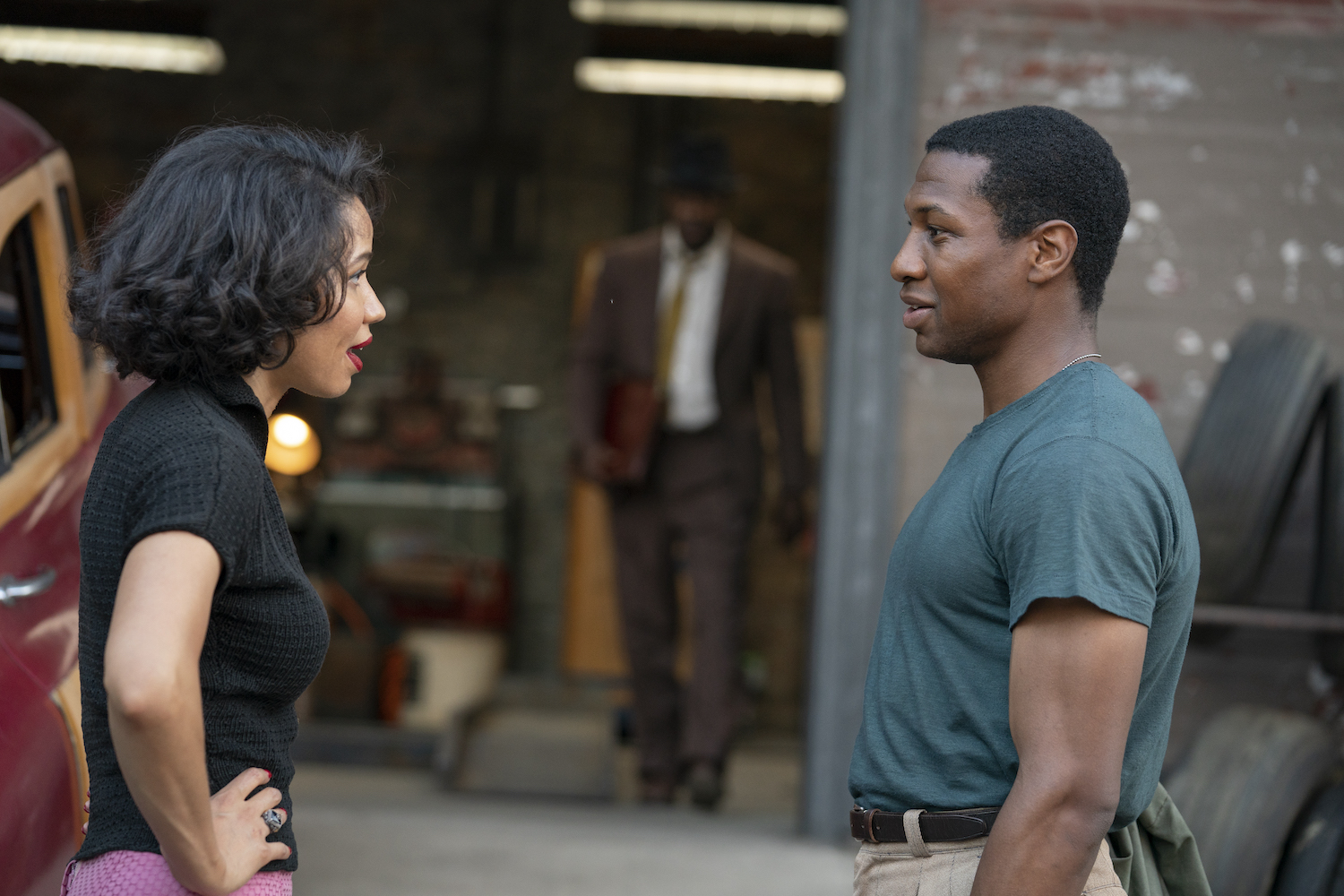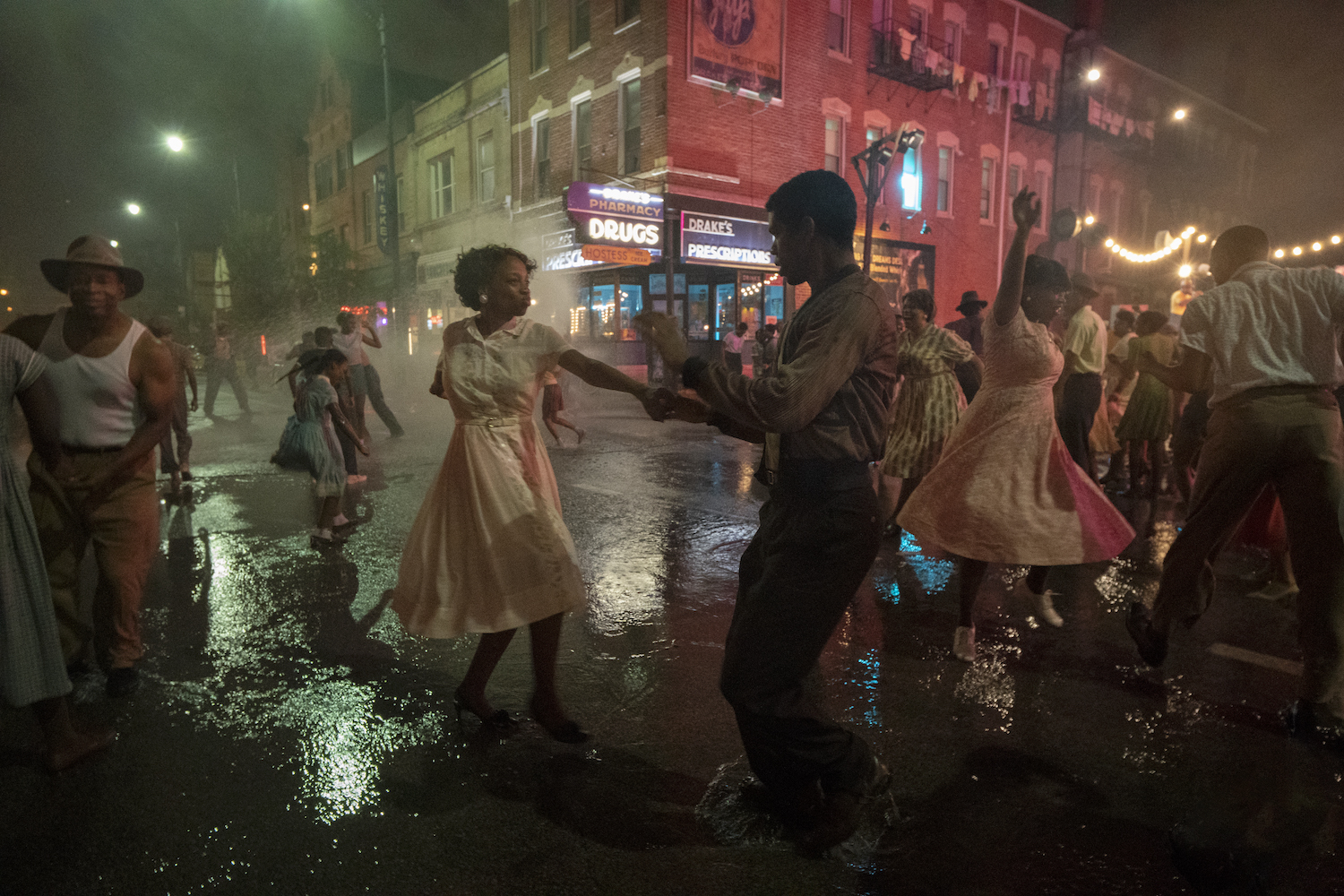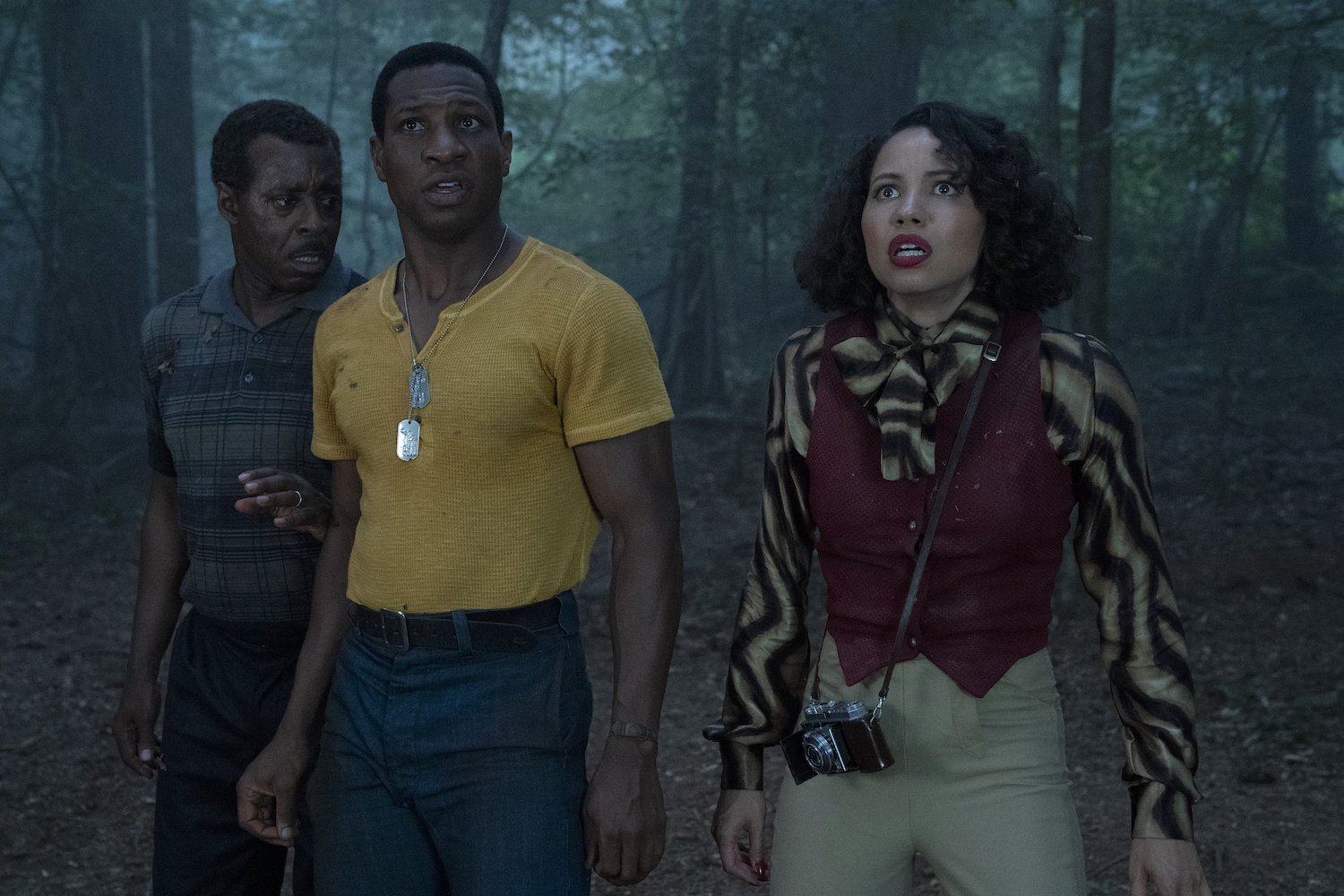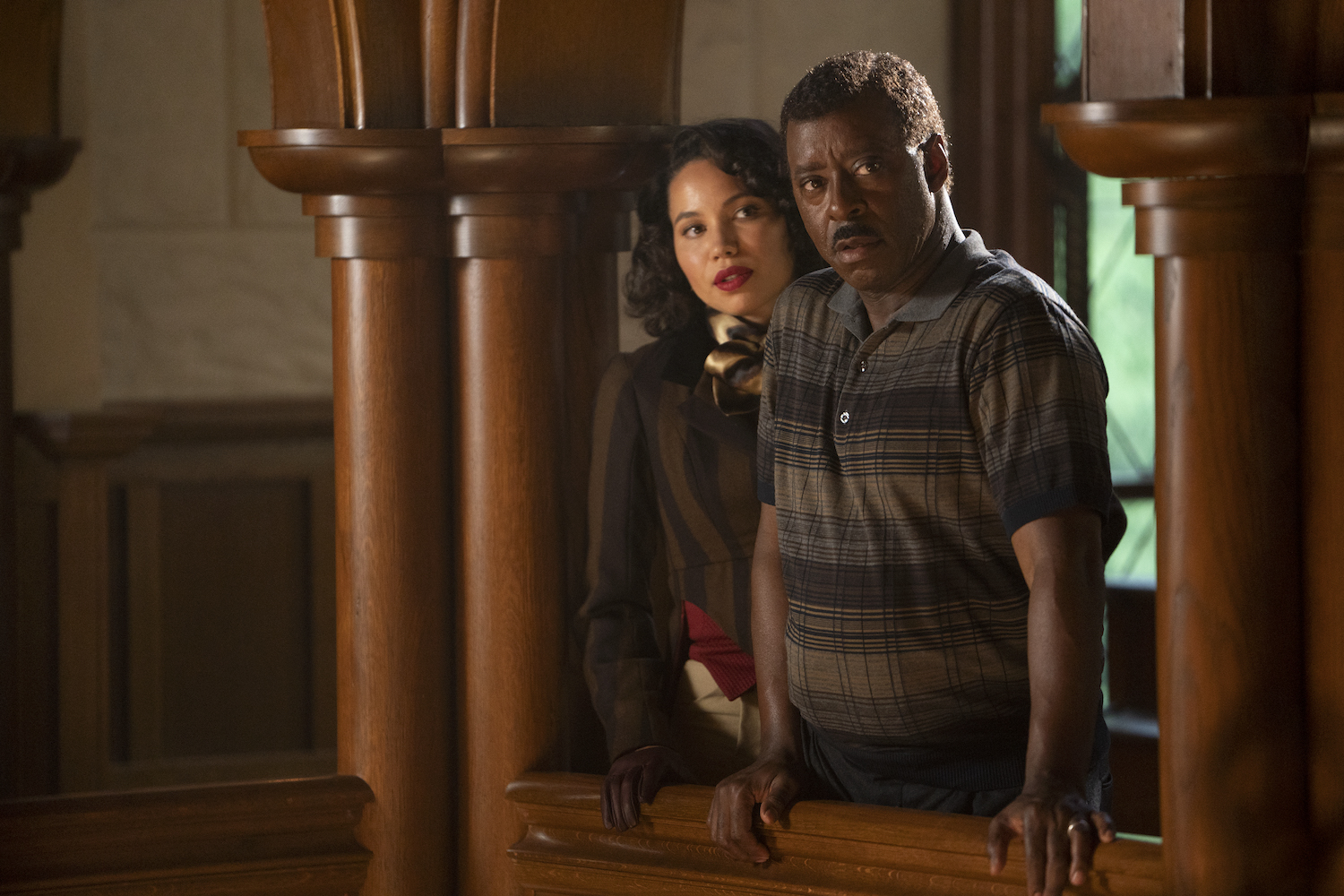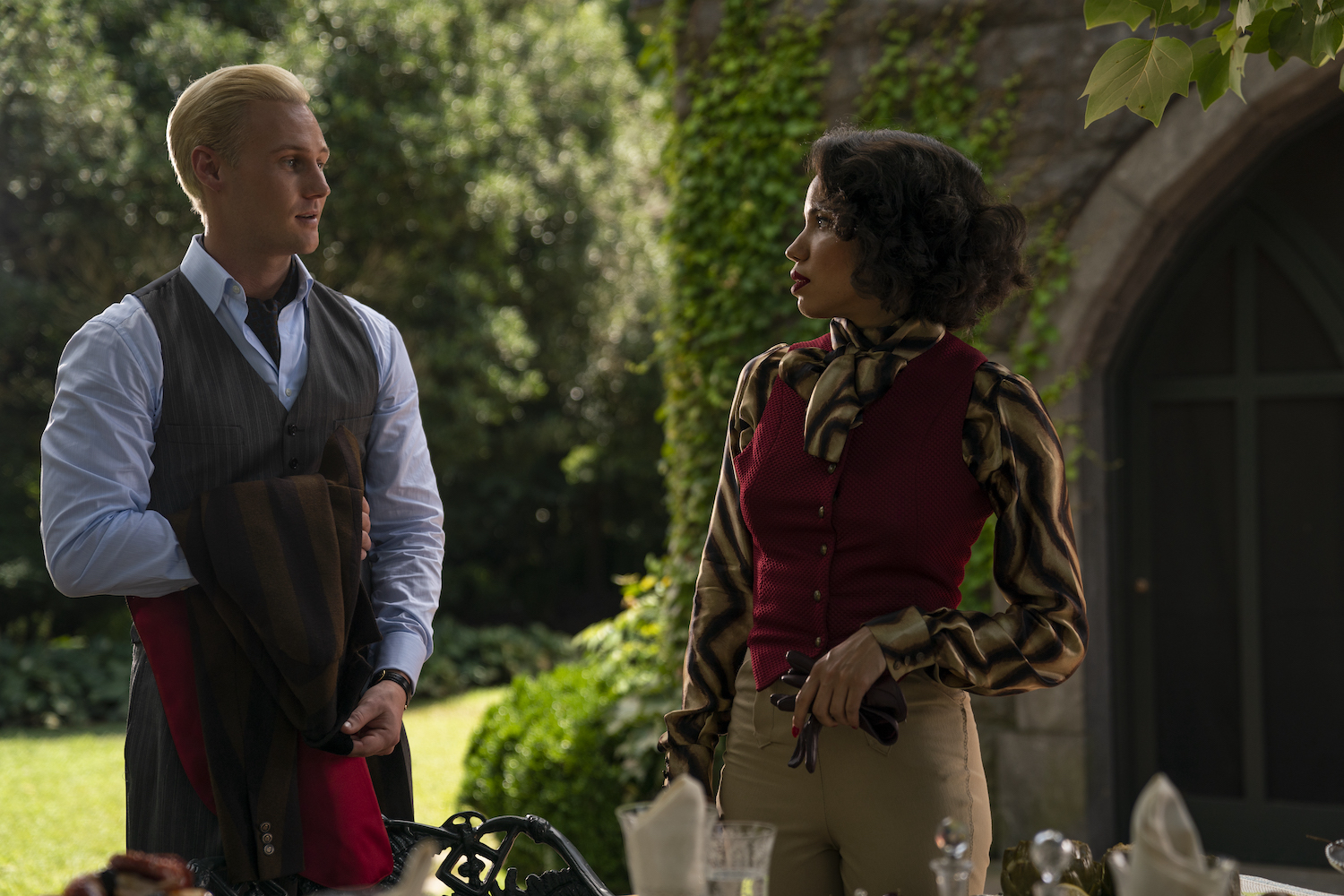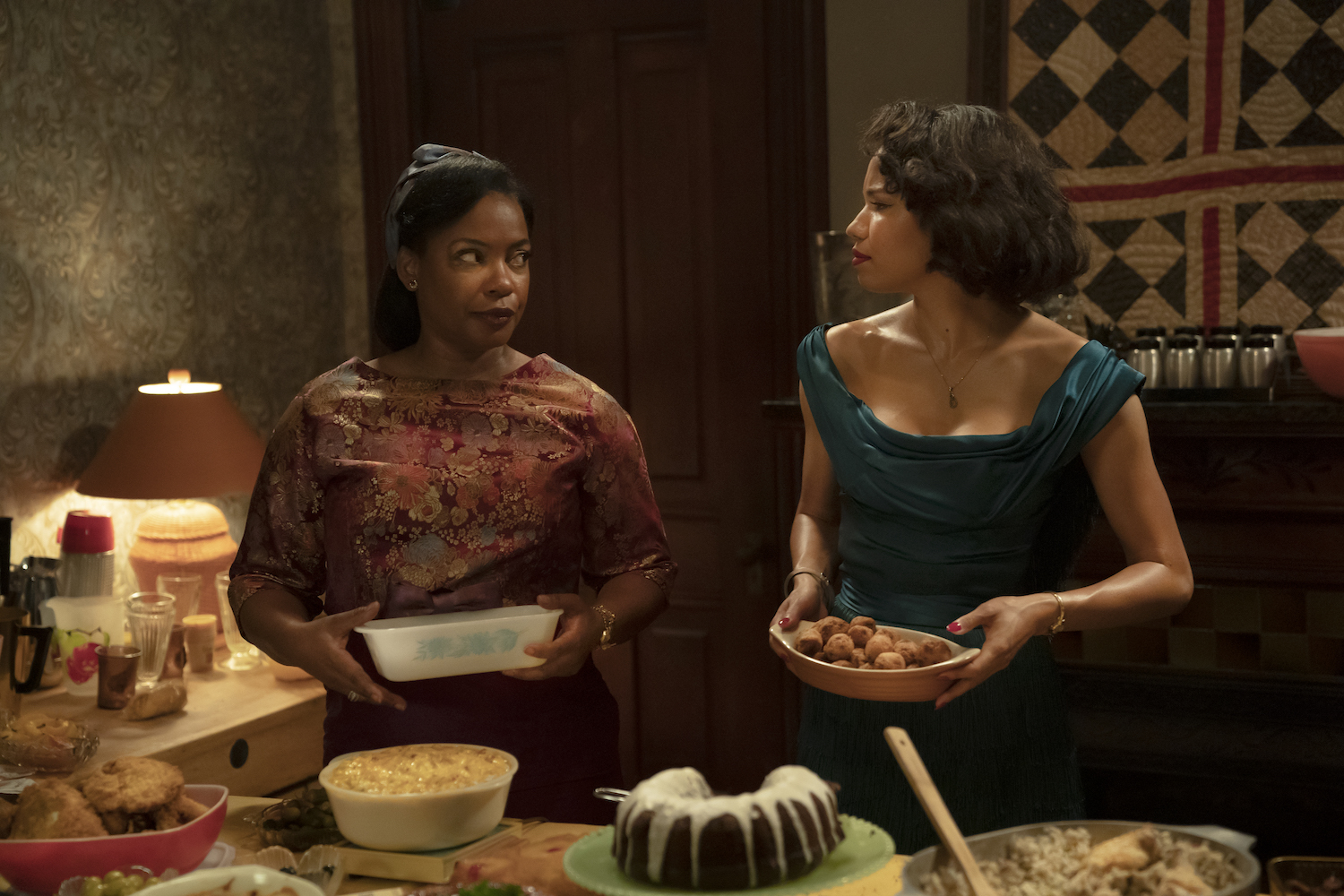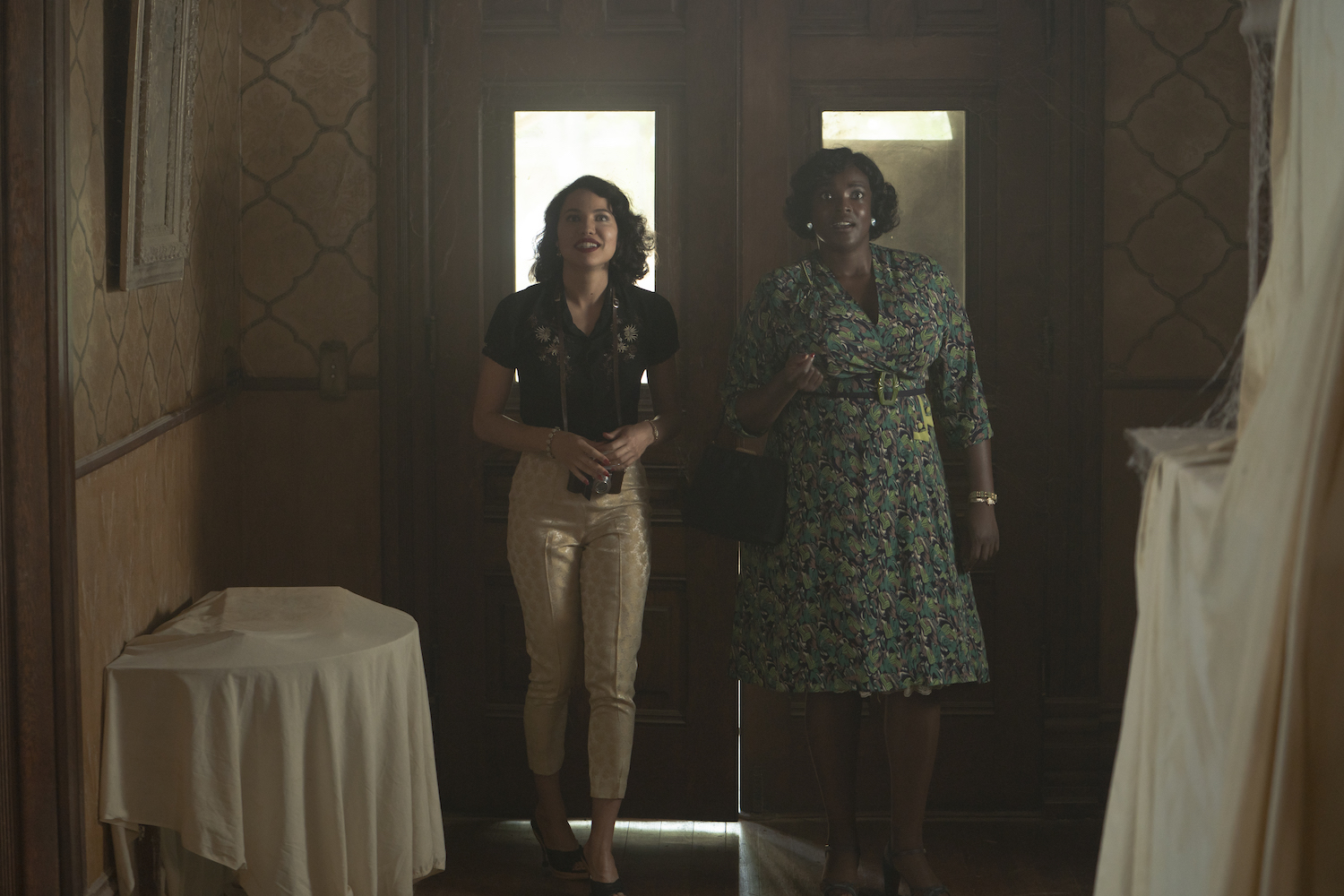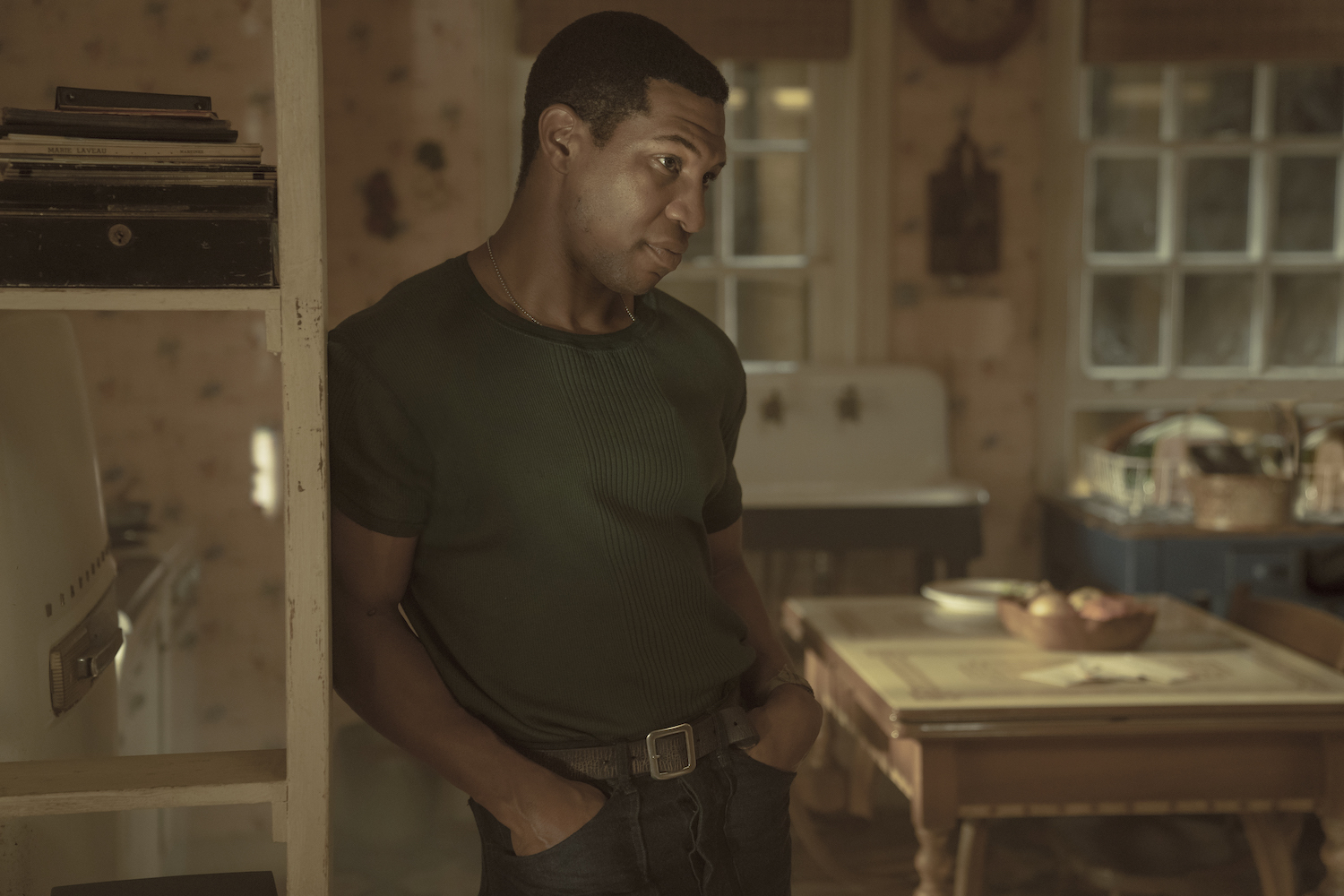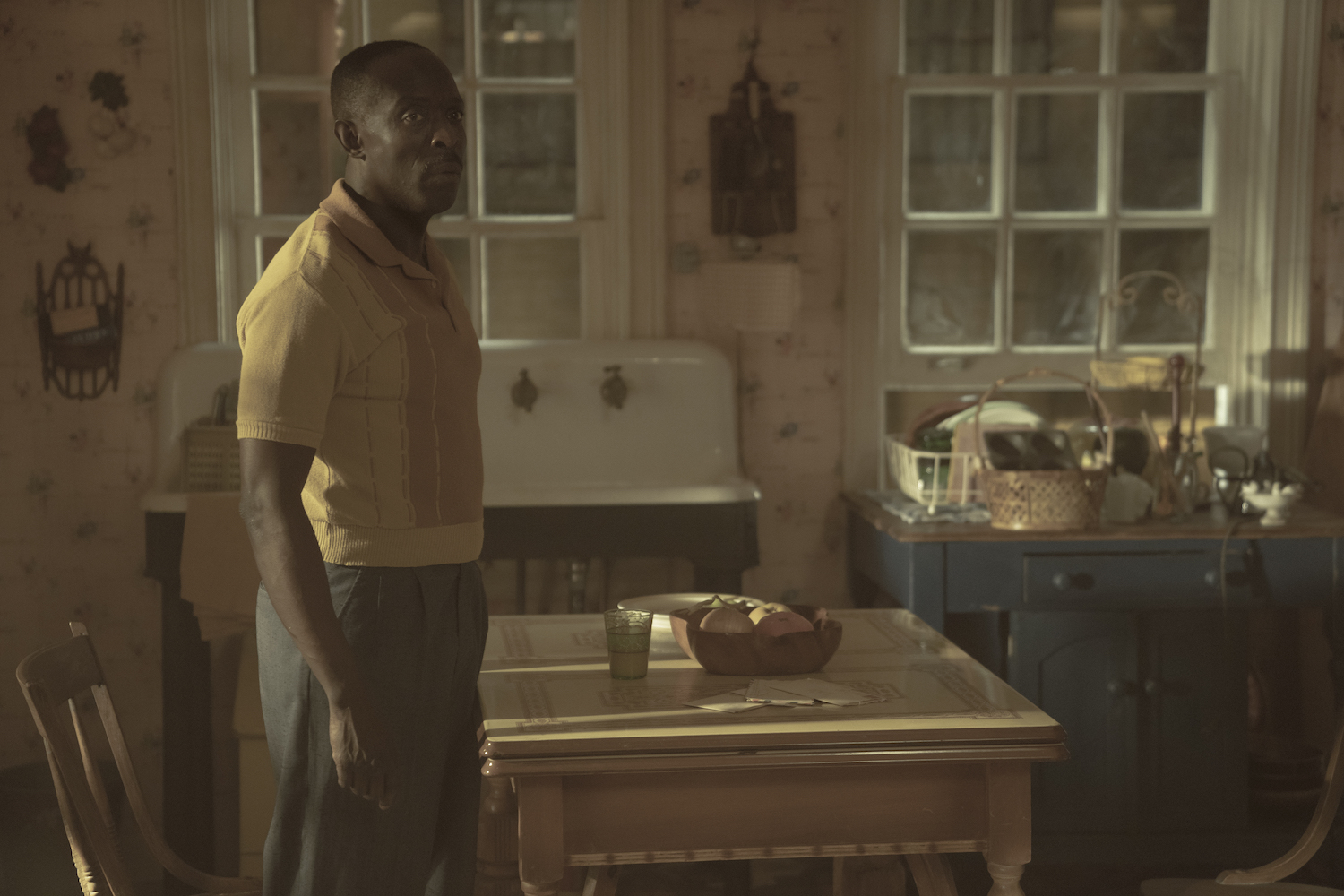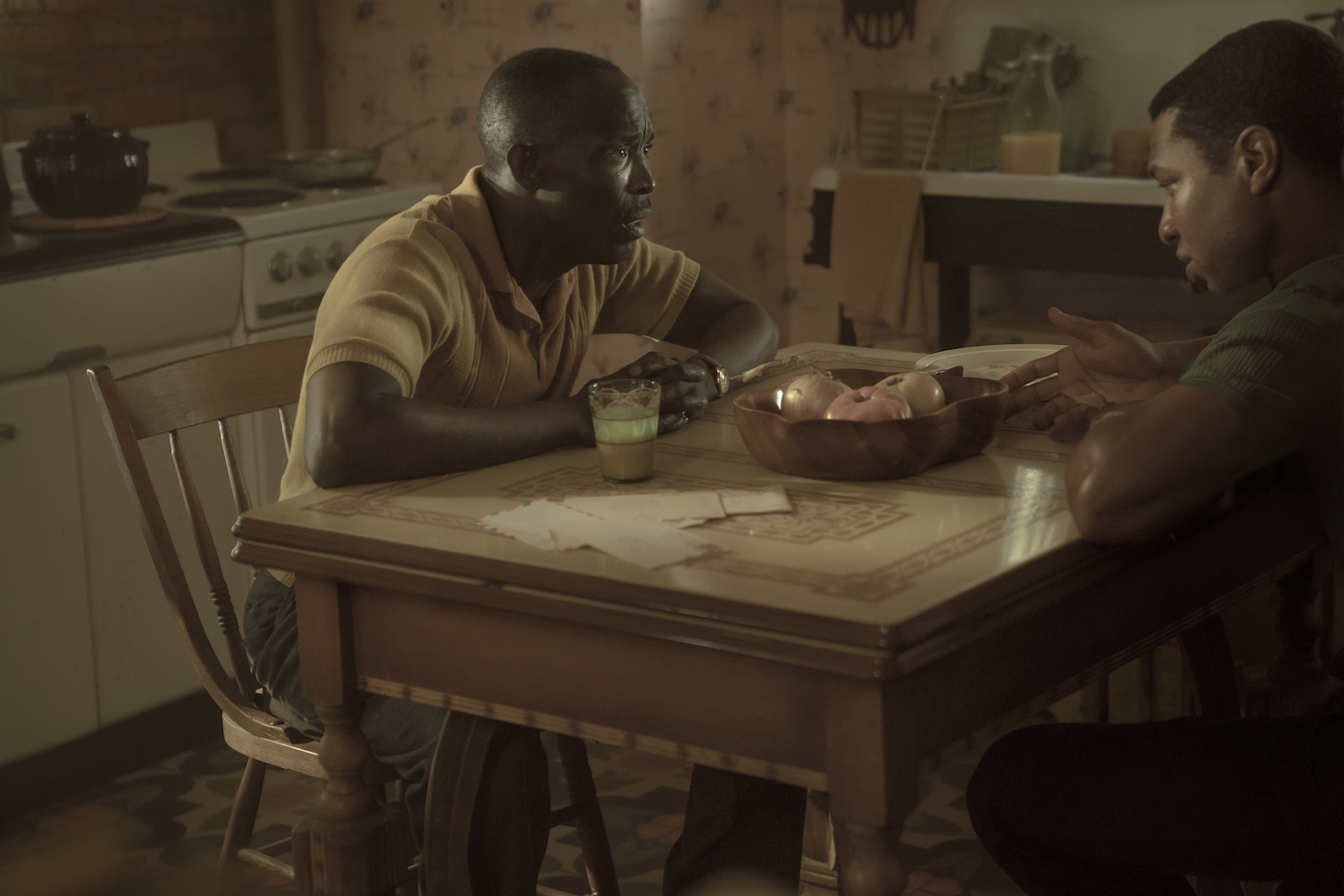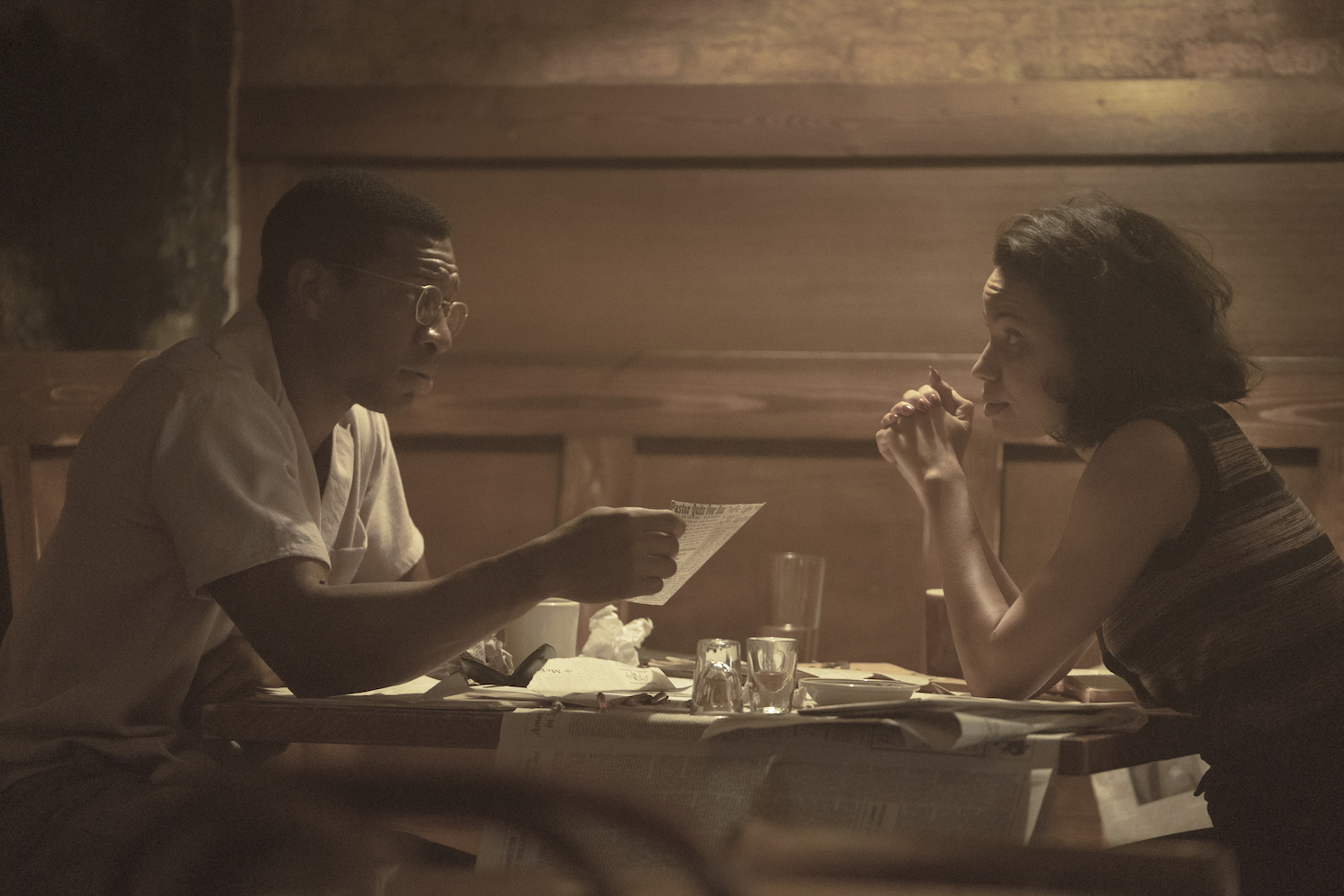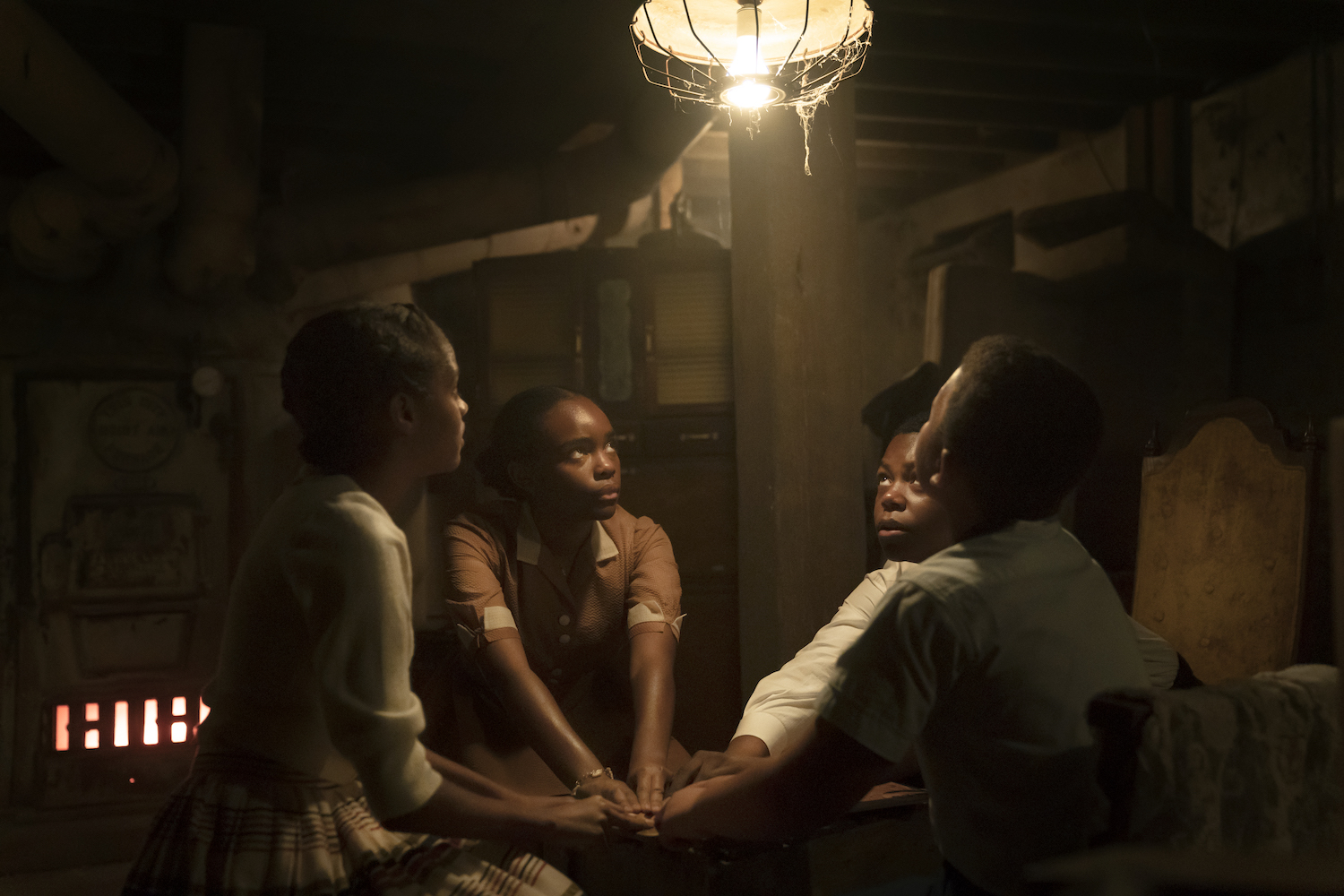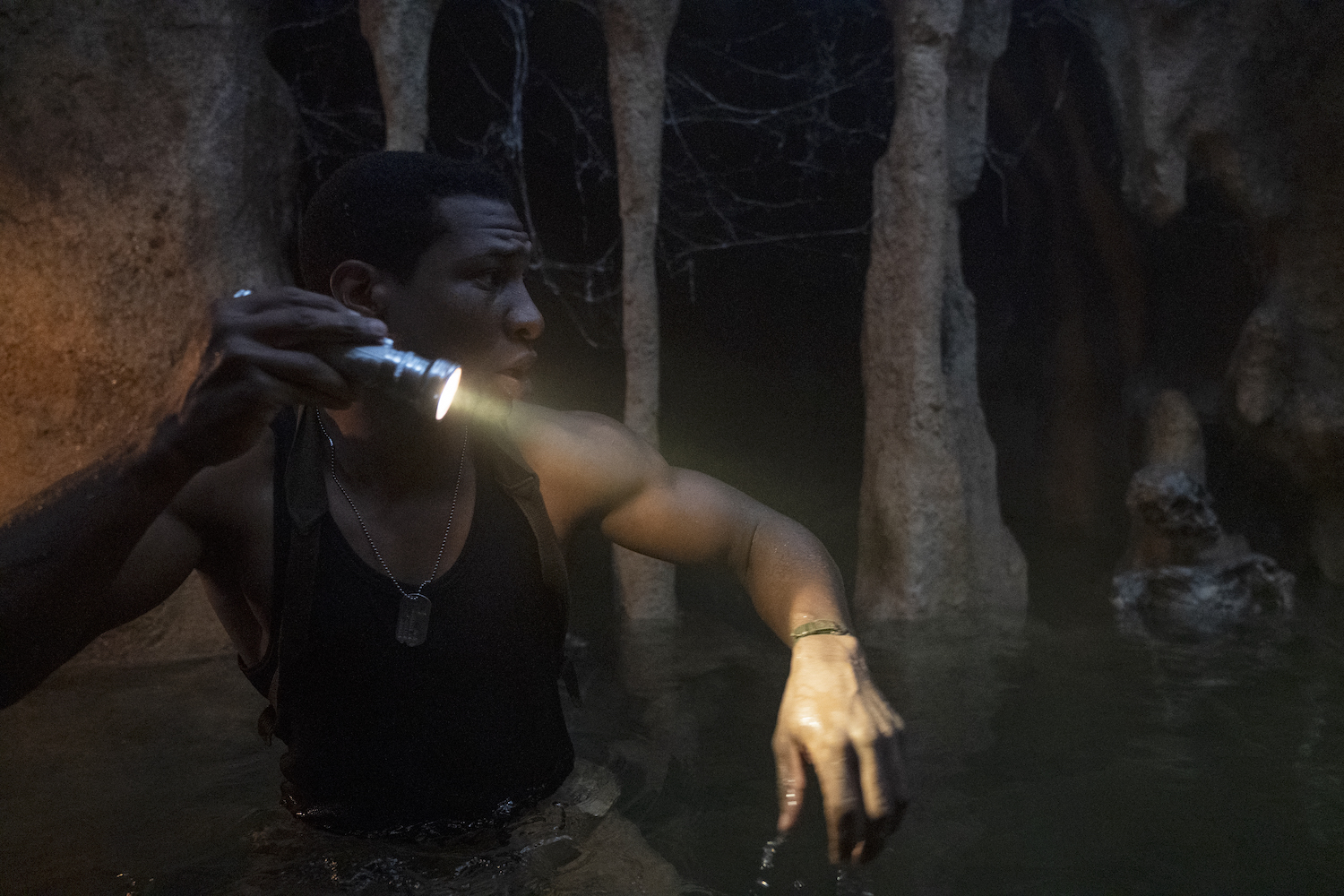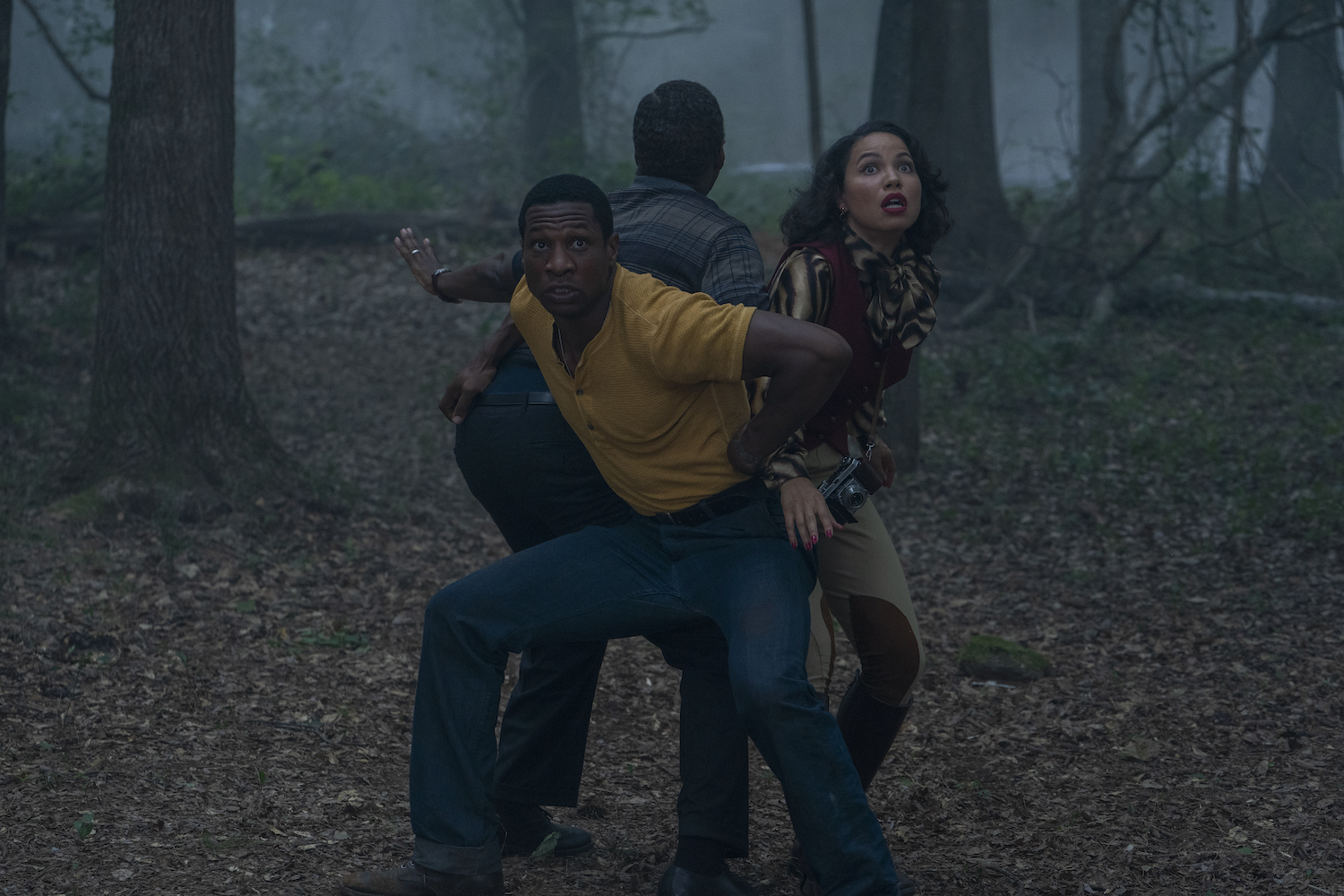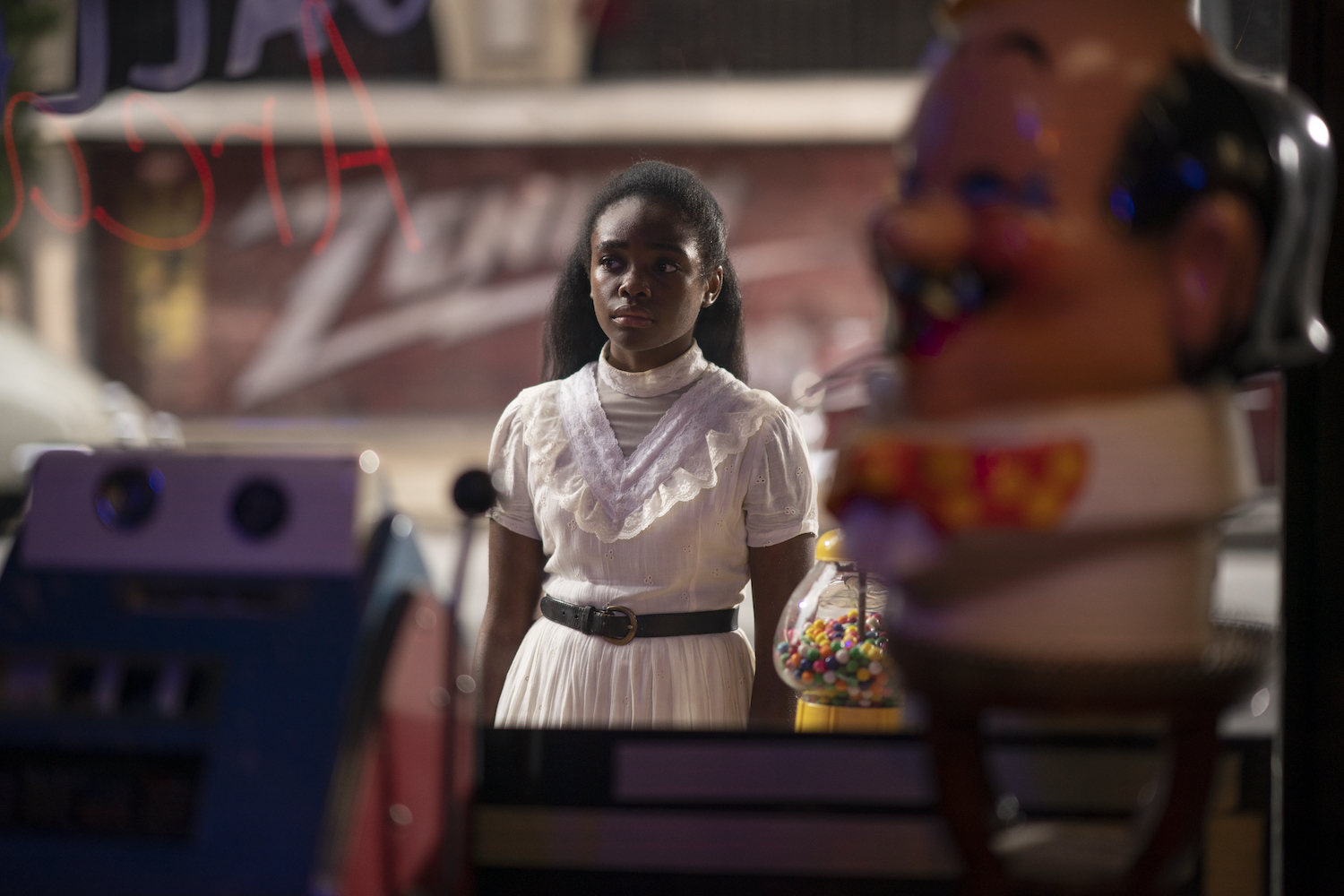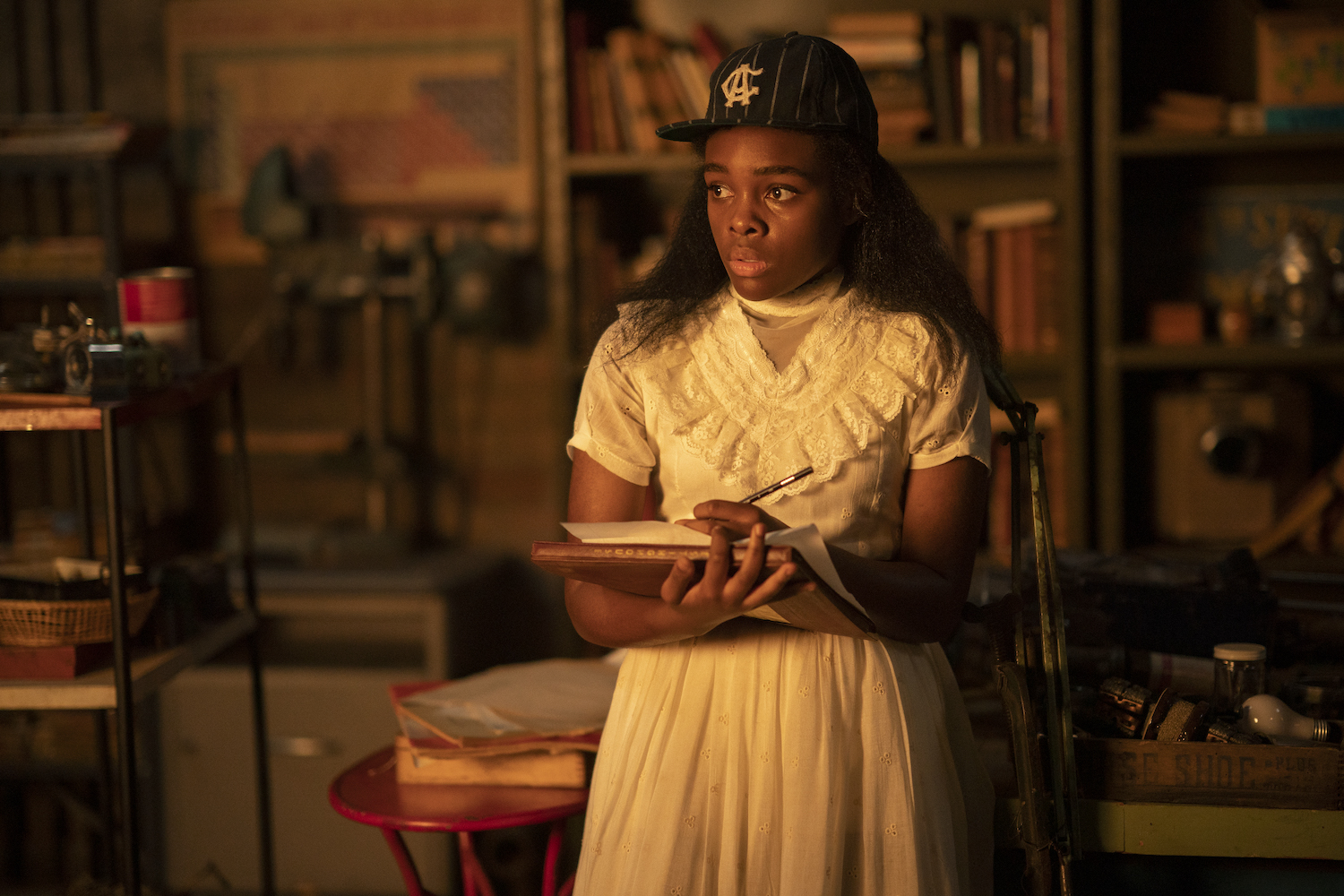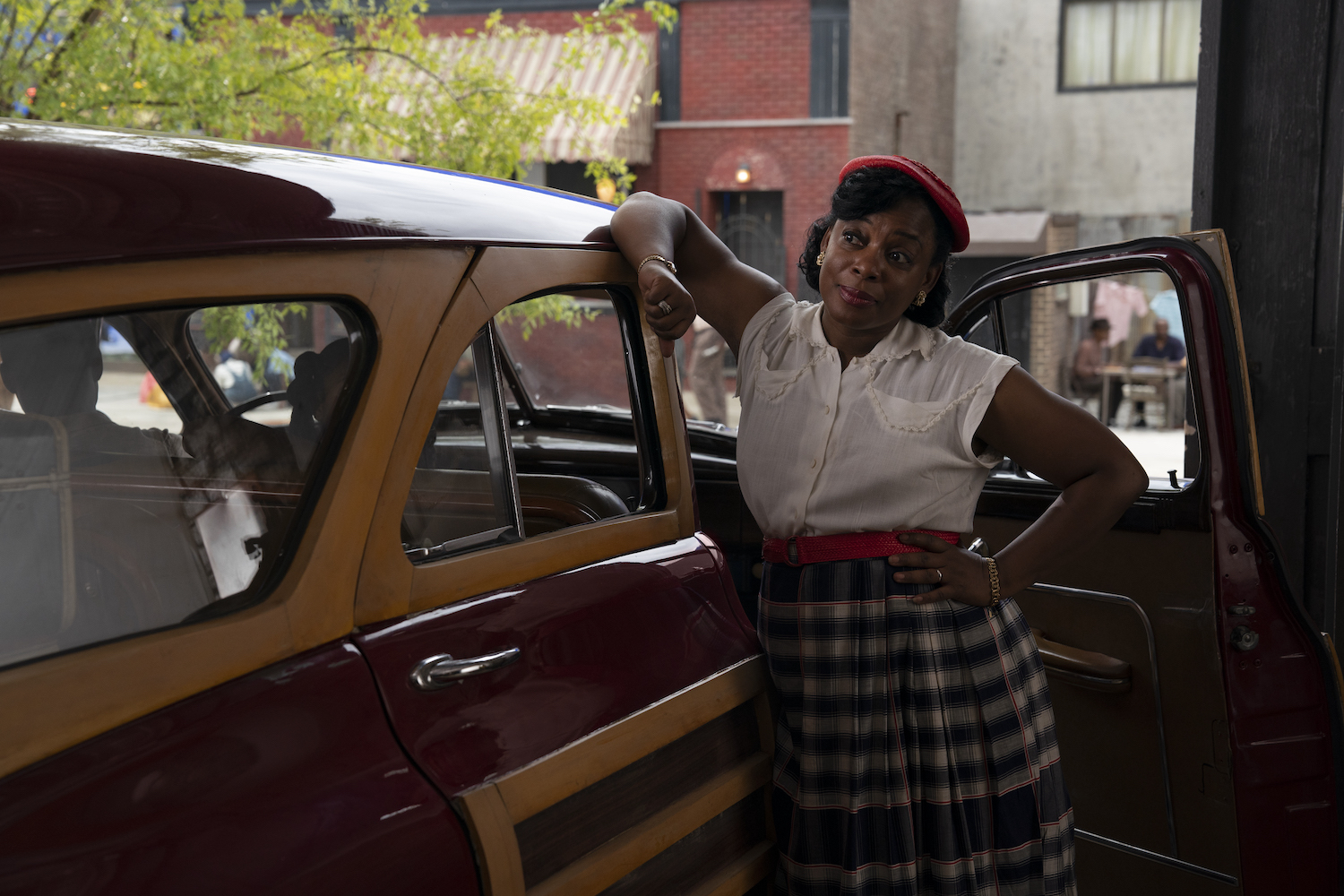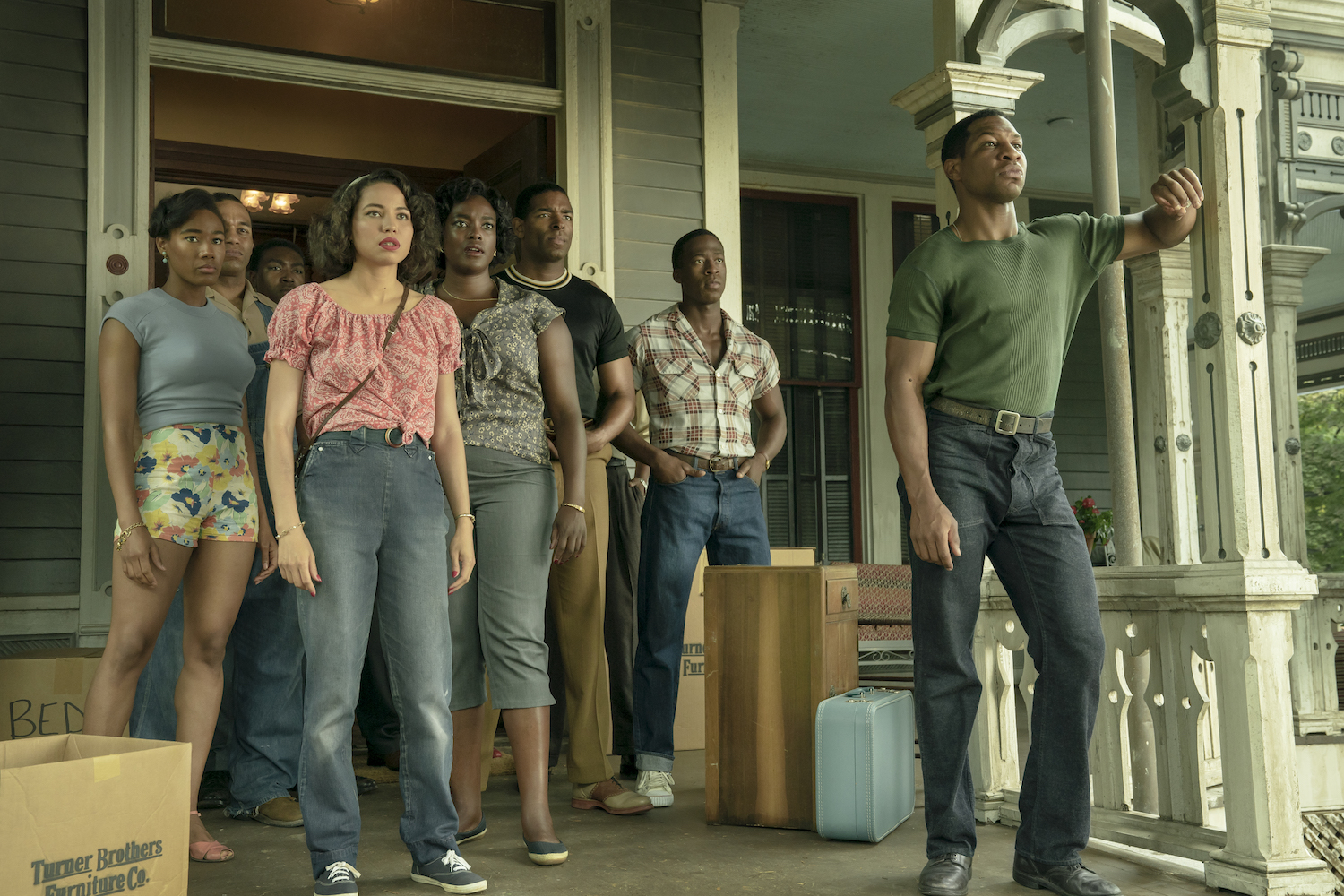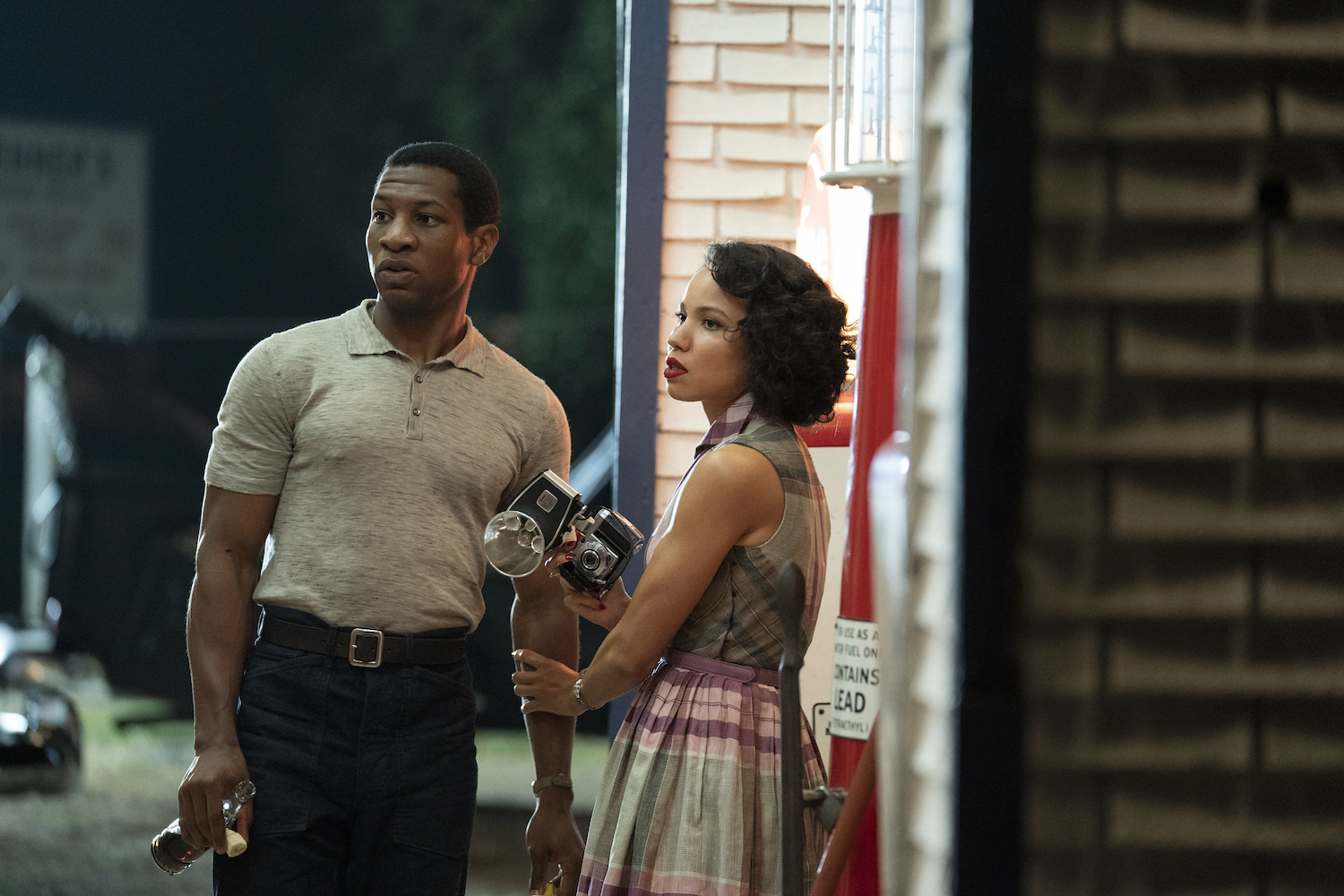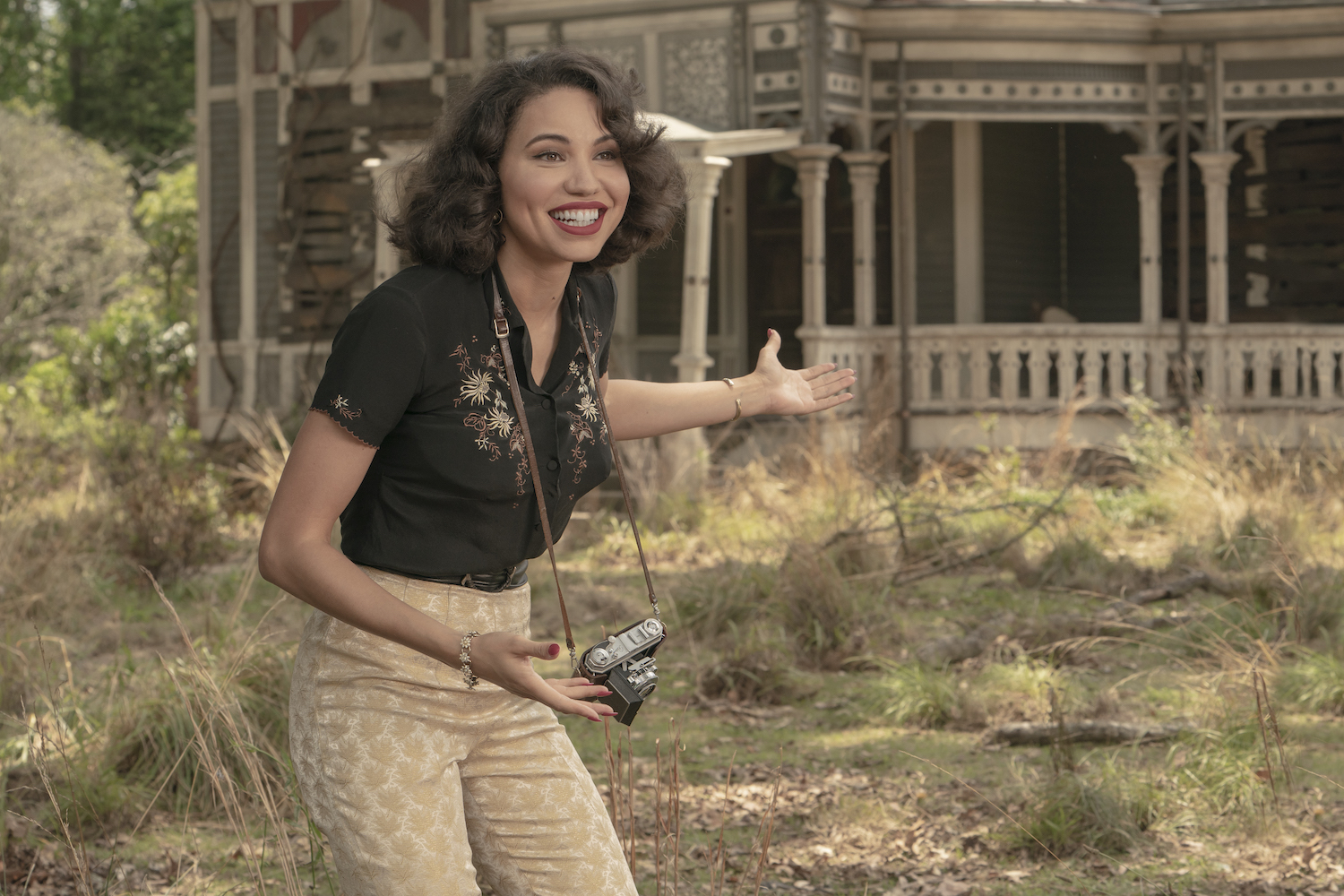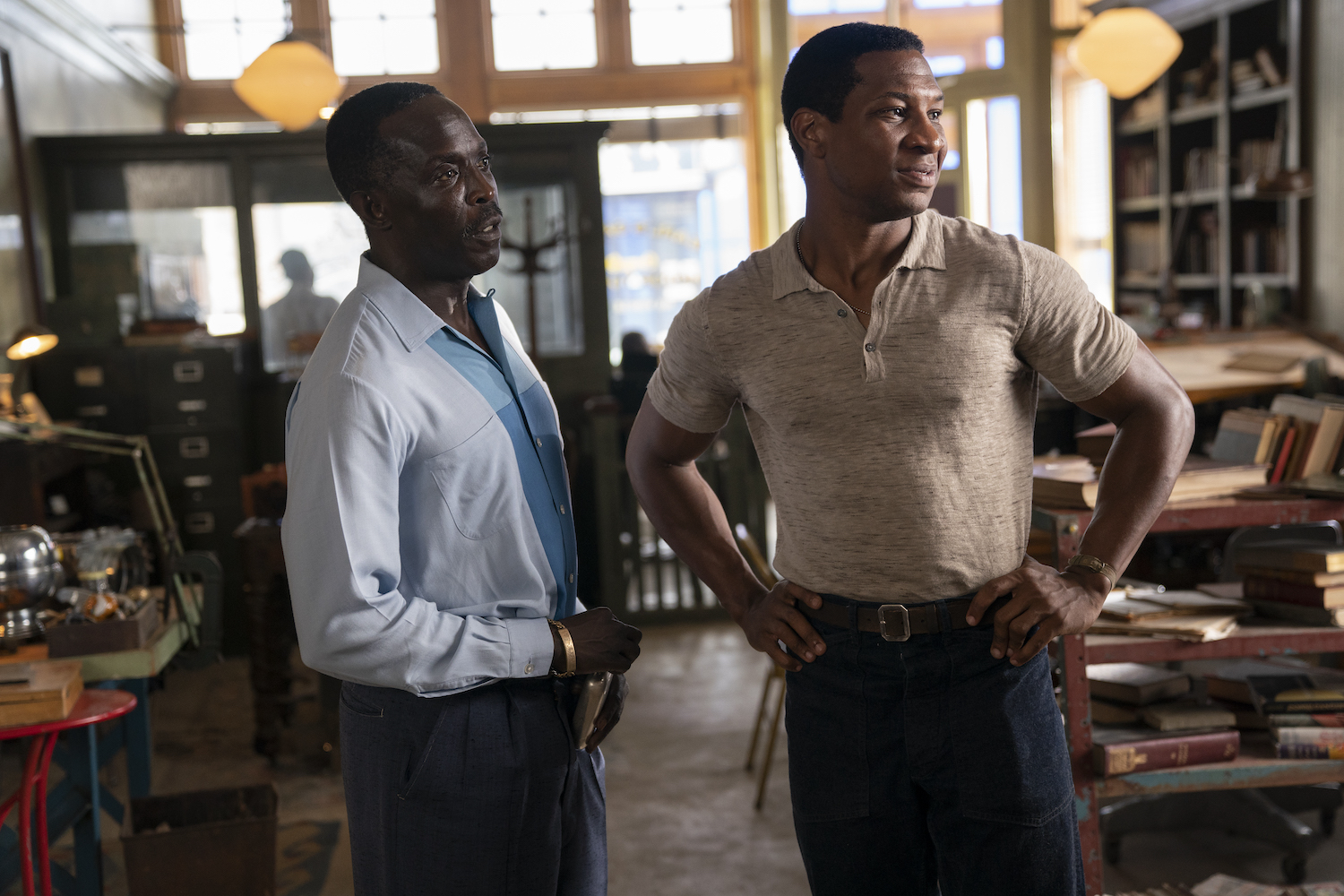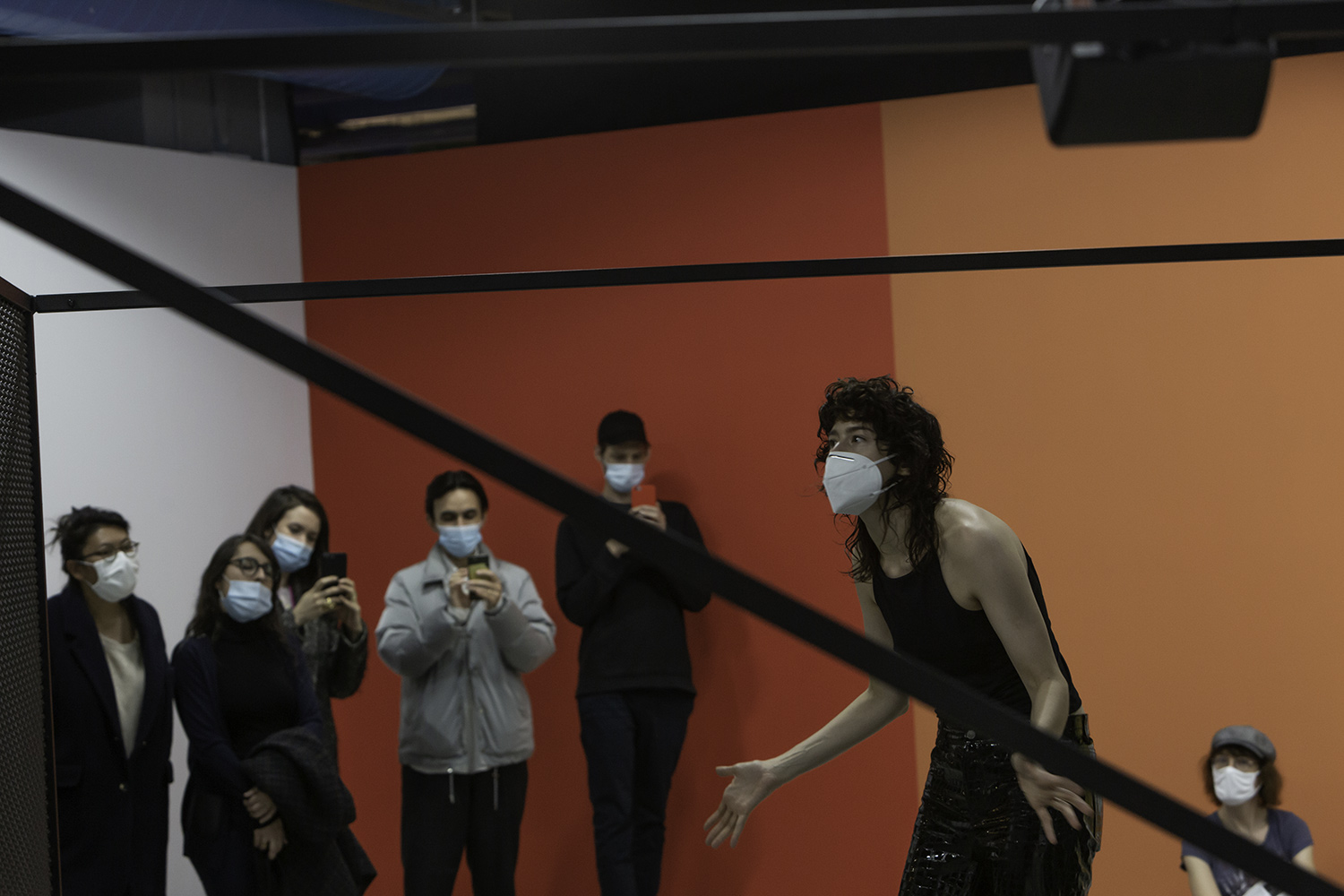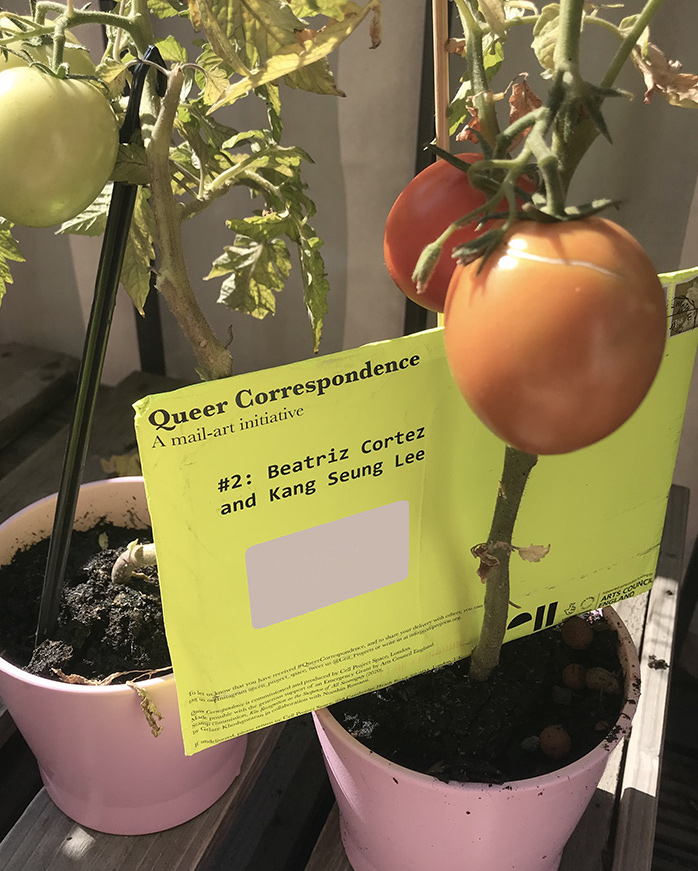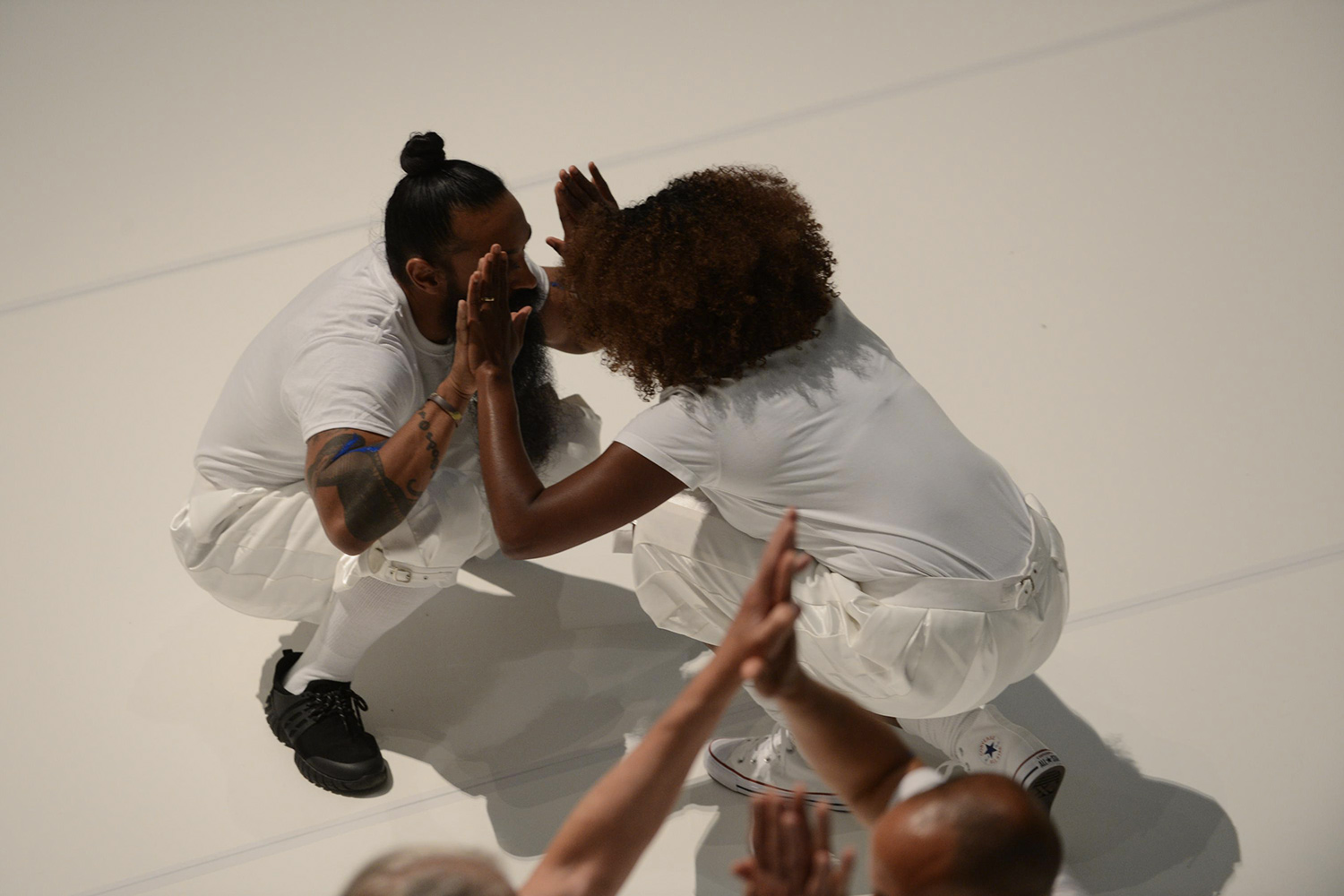The tropes of the horror genre — dread, terror, violence, trauma, monsters, and evil forces — constitute nightmarish plots specific to Black lives and Black history.
Writer and producer Misha Green explains: “In horror, there’s a level of anxiety that your life can be taken at any moment. That’s the Black experience.”1 The dynamic vicissitudes of Black life make horror a fitting genre for her new HBO series Lovecraft Country, which premiered in August of 2020 and broadcast during a time marked by a global pandemic, civil unrest, and anti-Black violence. Green’s interest in what Black people are “willing to do for metaphorical and physical survival” contours her gothic and historical fiction, based on Matt Ruff’s 2016 novel of the same name, about race in America.2
Ruff’s novel reinterprets the dark fantasy world popularized by cosmic horror mastermind and virulent racist H. P. Lovecraft. While Lovecraft’s personal and literary worlds were steeped in white supremacist ideologies, Ruff reclaims the genre for people of color and, by extension, Green’s television adaptation “reclaim[s] the reclamation.”3 This process, according to literary scholar Kinitra Brooks, is an example of “racecraft,” a term coined by comic artist and scholar John Jennings to describe “an attempt by BIPOC (Black, Indigenous and People of Color) and progressive white writers like Matt Ruff to take on the products of Lovecraft’s literary brilliance while simultaneously pushing back at his racist themes.”4 Brooks explains that by “reading and creating against the grain,” Green’s racecraft “is actually a part of a long tradition of Black folks remixing and revising those things that were meant to exclude, oppress, and denigrate us.”5
In her remix and revision of both Lovecraft and Ruff’s fantasy worlds, Green’s ambitious adaptation is a compelling and convoluted series that falters, at times, in its narrative logic and character motivations. Critics have, understandably, called the bold series to task for reinforcing racial stereotypes, exploiting Black tragedy, and villainizing queerness.6
However, the show’s standout ensemble cast elevates the weighty material, doing much of the series’ emotional anchoring and heavy lifting via masterful performances of sometimes maladroit storylines. Aunjanue Ellis’s stunning work as Hippolyta Freeman — housewife and mother turned time traveler — in the Afrofuturistic episode “I Am” is particularly noteworthy. Even with these missteps and saving graces, Green’s Lovecraft Country is a decidedly “thick” series about the dense fabric and fabrication of racial histories and imaginaries that shape Black life on and off screen.7
Lovecraft Country dramatizes the monstrosities of racial terror in 1950s Jim Crow America. The series follows Atticus “Tic” Freeman (Jonathan Majors), a Black Korean War veteran from the Southside of Chicago, who finds himself on a hero’s journey when he goes searching for his missing father in the backwoods of Massachusetts.
Accompanied on the rescue mission by his uncle, George Freeman (Courtney B. Vance), and friend, Leticia “Leti” Lewis (Jurnee Smollett), the three are terrorized on their road trip by racist townsfolk, bigoted sheriffs, and fantastical creatures. Later, Tic learns that he is a descendant of Titus Braithwhite, a white slave trader and founder of an occult secret society. The revelation of Tic’s secret birthright sets the stage for a transhistorical, episodic parable of monsters and white men — metonymic figures per Green’s imagination — in this supernatural tale that blends cosmic horror, science-fiction, action-adventure, magical realism, and historical fiction into a dense domestic melodrama.
In the series, Green’s racecraft renders a Lovecraftian narrative arc in which “the main character [Tic] will encounter unknown entities, dreamscapes, dimensions, and underworlds that shatter all previously held notions of science, history, and humanity.”8
But she remixes and revises the story to engage Black social experiences. The televisual excesses, however, goes beyond the grotesque creatures and speculative worlds endemic in Lovecraft tales to also include rich, intertextual references to Black history, artistry, and experiences. For example, the series’ opening scene is a sci-fi dreamscape where the show’s protagonist, Tic, is a soldier under attack by alien creatures. He is rescued by a bat-swinging character dressed as Jackie Robinson, who famously broke Major League Baseball’s color line in 1947. Robinson’s integrationist star-image signifies Green’s racecraft interventions, grounding the show’s fictions “in reality and issues that are a part of this country’s history even with all the fantastical elements.”9 The show alludes to Denmark Vesey, sundown towns, Trumbull Park, the Green Book, and the Tulsa Massacre — real people, places, materials, and events in Black history that remind the viewer that Lovecraft Country’s characters exist in a familiar world. These snapshots of Black pasts are even animated in the show; for example, in Green’s nod to Gordon Park’s Segregation Story photo series, including his 1956 photo of a Black woman and child outside of the “colored entrance” of a department store in Mobile, Alabama. In the “Sundown” episode, Tic, George, and Leti walk “through” this once still and now moving image. The trio are in history even as the story ruptures time and space to remind audiences of a shared past filled with the quotidian horrors of racial discrimination and segregation.
Along with iconic imagery, Lovecraft Country illustrates “bruising moments,” scenes that writer Greg Tate describes as those that “brush up against the black historical tragedy.”10 For example, in the episode “Holy Ghost,” Leticia purchases a home in Chicago’s all-white North Side that is haunted by Black people who were kidnapped for deadly medical experiments by a deranged white scientist. During the episode, Leti hosts a housewarming party, and the guest’s children play with a Ouija board. A character named Bobo (Emmett Till’s nickname) asks if he will have fun on his trip to the south. The spirit board moves the planchette to the word “no.” The foreshadowed racial violence becomes the devastating backdrop of a later episode, “Jig-a-Bobo,” in which the city shuts down for Bobo/Till’s funeral after his brutal murder.
Green’s integration of Black historical tragedies into the show reminds us that Black memory is a metaphorical and real haunted house of lives terrorized by whiteness.
Lovecraft Country’s sonic citations function, in Carter Mathes’s terms, “as a realm of resistance to and as a critique of an American narrative of black life defined broadly by a movement toward citizenship and racial equality.”11
For example, when Tic, George, and Leti are making their way to Ardham, Massachusetts, to rescue Tic’s father, the trio cross through Midwest “sundown towns,” all-white areas where Black people were subject to violent assault if they were found outside after dark. Shots of 1950s segregated America are punctuated by James Baldwin’s 1965 debate with William F. Buckley in which he articulates:
The inequality suffered by the American Negro population of the United States has hindered the American dream. Indeed, it has. I quarrel with some other things he has to say. The other, deeper element of a certain awkwardness I feel has to do with one’s point of view. I have to put it that way — one’s sense, one’s system of reality…”
Baldwin’s indictment of racial subjections and segregated systems of reality provides an acoustic critique, amplifying the idea that the American Dream for white people is, in fact, the American Nightmare for Black people. The speech, as with the presence of Robinson as a character, citation of Parks’s iconic photograph, and conjuring of Till, resituate Lovecraft Country’s source text from its Lovecraftian allusions into the realms of Black artistry, history, and tragedy.
The potent use of sonic interpolation continues throughout the series. In the episode “Whitey’s on the Moon,” Tic learns that he has been baited to Massachusetts to be sacrificed in a ceremony for the occult society’s leader to gain immortality. As the ritual begins, Gil Scott-Heron’s spoken word poem “Whitey on the Moon” from his 1970 album Small Talk at 125th and Lenox plays
I can’t pay no doctor bills, but whitey’s on the Moon
Ten years from now I’ll be payin’ still, while whitey’s on the Moon
The man just upped my rent last night, ’cause whitey’s on the Moon
No hot water, no toilets, no lights, but whitey’s on the Moon
As Tic’s life is nearly drained from him to power the spell (he is saved by the spirit of his enslaved ancestor Hannah), the poem’s phonics castigate America’s obsession with space travel at the expense of Black and impoverished communities. Critic Lex Pryor argues that the scene “serves as a reminder of the ways in which the unconscionable resources of the powerful (in the show’s case, white men even have a monopoly on magic) are inseparable from the conditions of the oppressed. Even in the show, power begets suffering.”12
In the episode “Rewind 1921” about the Tulsa Massacre, Sonia Sanchez’s “Catch the Fire” from her 1995 poetry collection Wounded in the House of a Friend resounds in an emotionally wrought scene between Leti and Tic’s great-great grandmother, Hattie, as she passes on the sacred text needed to protect their family. Leti and Hattie stand together, holding hands as Hattie’s house becomes consumed in flames. Sanchez’s words envelope the scene:
Where is your fire? I say where is
your fire?
Can’t you smell it coming out of
our past?
The fire of living . . . . . . Not
dying
The fire of loving . . . . . . Not
killing
The fire of Blackness . . . Not
gangster shadows.
Where is our beautiful fire that
gave light
to the world?
Sanchez’s words exclaim — “catch the fire… and live” — as Hattie’s body is consumed in flames while she holds the hand of a pregnant Leti. Hattie’s proclamation that Tic and Leti’s child’s birth will be “her faith turned to flesh” underscores the intergenerational legacies of Black struggle and perseverance rhetorically ablaze in Sanchez’s words and cadence.
The show does not only echo the past but also projects the present moment into its historical fiction. In the episode “Jig-a-Bobo,” Tic’s young cousin Diana “Dee” Freeman (Jada Harris) is cursed by a racist cop and attacked by two evil Black caricatures, Topsy and Bopsy from Harriet Beecher Stowe’s Uncle Tom’s Cabin. As the spirits stalk Dee throughout the day, we hear eleven-year-old youth activist Naomi Wadler’s speech from the March for Our Lives rally in 2018:
I am here today to acknowledge and represent the African American girls whose stories don’t make the front page of every national newspaper, whose stories don’t lead on the evening news. I represent the African American women who are victims of gun violence, who are simply statistics instead of vibrant, beautiful girls full of potential. For far too long, these Black girls and women have been just numbers. I am here to say never again for those girls too. I am here to say everyone should value those girls too.
Wadler’s insurgent speech on the erasure of the daily assaults Black girls and women face modernizes the episode’s attention to how Dee’s been denied protection from real and mythic racial and gendered violence. The episode embeds the #sayhername rhetoric to highlight the need for intersectional advocacy about the ways in which violence against Black girls is disregarded, ignored, and downplayed in American society.
Lovecraft Country’s visual and sonic resonances produce a textured, polyvocal work that feels both grounded in and unbound by time. The show’s temporal destabilization, Green explains, comes “from a desire to make [Lovecraft Country] feel like a piece out of time. Yes, it’s set in the past, but it’s also very much here in our present, and it will be in our future. How do we take these found-footage audio pieces and place it there, so you understand that this is our history, this is us now, and it can be us in the future.”13 The visual iconography and soundscapes bridge time for the characters and viewers, producing a transgressive, transhistorical fiction that draws from Black memory, affirms the present and exigent humanity of Black lives, and imagines a fantastic Black future with Black women at the center of the universe.

